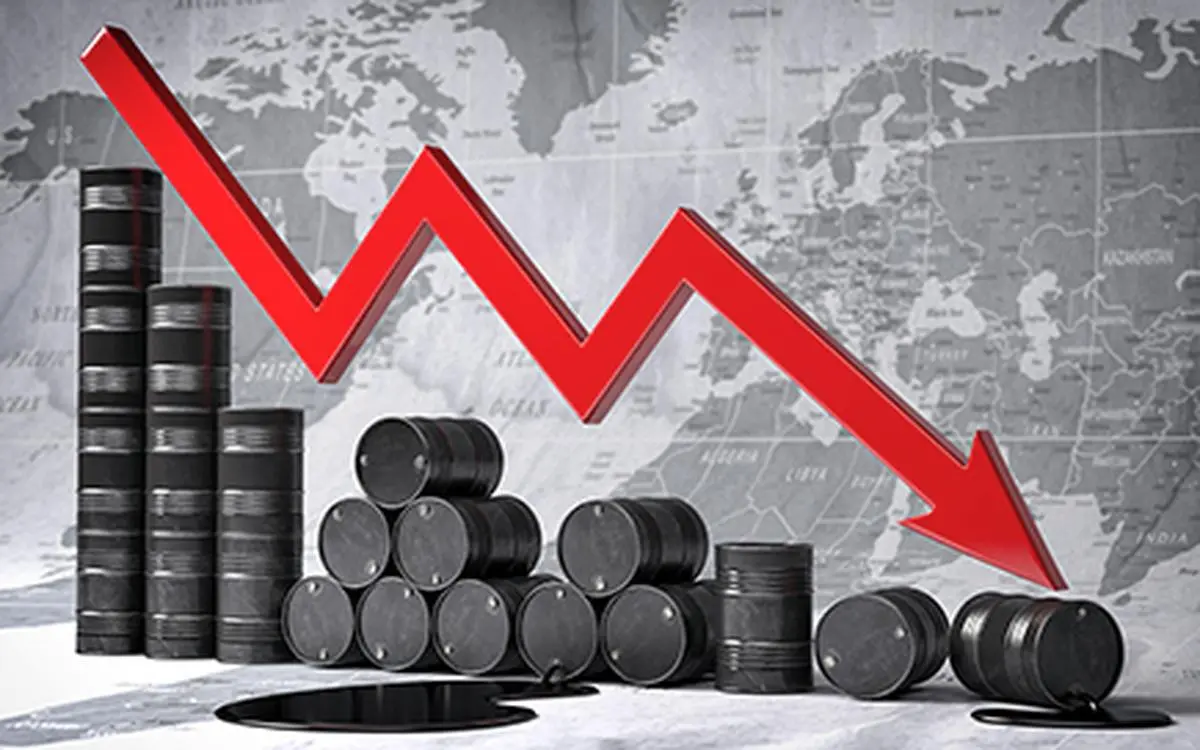
The global oil market is navigating turbulent waters, facing a far more complex and profound challenge than the widely discussed economic slowdowns in China and India. While reduced demand growth in these two massive economies has certainly contributed to recent market fluctuations, it is merely one piece of a much larger puzzle. The oil market today grapples with intertwined issues ranging from constrained supply, geopolitical risks, shifting global energy policies, to the accelerating energy transition away from fossil fuels. Together, these factors are reshaping the oil landscape in unpredictable ways, prompting deep questions about future supply security, price stability, and the long-term role of oil in the global energy mix.
Beyond China and India: Unraveling the Myth of Demand Slowdown as the Core Issue
For decades, China and India have been hailed as the twin engines powering the growth in global oil demand. Their rapid urbanization, industrial expansion, and burgeoning middle classes created voracious appetite for crude oil — from transportation fuels to petrochemicals and power generation. As such, shifts in their economic momentum have often been seen as the key bellwether for oil markets worldwide.
Recent economic indicators, however, suggest that growth in these countries has decelerated. China’s post-pandemic recovery has encountered obstacles such as domestic policy shifts, real estate sector troubles, and cautious consumer spending. India too has faced inflationary pressures and structural challenges affecting its expansion trajectory. These developments have led many market observers to pin blame for weak oil prices primarily on demand worries emanating from these two nations.
Yet, this perspective oversimplifies a much more nuanced reality. While China and India’s growth patterns undeniably influence oil demand, they do not operate in a vacuum. The global oil market’s current fragility also stems from persistent and significant supply-side constraints, geopolitical volatility, and the broader structural evolution in energy consumption driven by climate imperatives.
Relying solely on demand-side explanations risks obscuring these critical underlying problems. Indeed, the slowdown in China and India’s demand is more a symptom amplifying existing vulnerabilities than the root cause of the oil market’s present predicament.
The Supply Side: A Market Strained by Underinvestment and Production Discipline
One of the most pressing challenges facing the oil market today is a pronounced supply crunch. After years of relatively low prices and volatile investment climates, global upstream spending on oil exploration and production has lagged behind the growing need for replacement capacity. This underinvestment stems from a complex blend of factors:
- Financial constraints and capital discipline: Major oil companies have shifted focus toward capital efficiency and shareholder returns, reducing aggressive expansion spending. This trend has been reinforced by cautious investor attitudes wary of fossil fuel exposure amid climate concerns.
- Regulatory and environmental pressures: Governments around the world are tightening rules on carbon emissions and fossil fuel projects. This regulatory environment raises the cost and risk of developing new oil fields, further discouraging investment.
- OPEC+ production strategy: Key oil-producing nations, including members of the OPEC+ alliance, have frequently opted for measured increases in output to preserve price levels. While these cautious policies aim to stabilize markets, they also limit supply flexibility and capacity growth.
The cumulative effect of these dynamics is a supply landscape that is less responsive to short-term demand changes and more vulnerable to disruptions. Aging fields are depleting, yet new production additions remain constrained by limited financial and regulatory appetite.
This tight supply situation contrasts sharply with earlier decades when the oil market could more easily ramp up production to meet surging demand, ensuring relatively stable prices. Today, the balance between supply and demand has become precarious, creating conditions ripe for price volatility.
Geopolitical Tensions: The Ever-Present Wildcard
Geopolitics has long been a defining feature of the oil market, but recent years have underscored how fragile the supply outlook remains in the face of geopolitical risks. Several flashpoints continue to loom large:
- Middle East instability: The Middle East remains the world’s most significant oil-producing region, but political conflicts, sanctions, and military tensions frequently disrupt supply flows. Conflicts in countries such as Libya, Syria, and Yemen, as well as rivalries among regional powers, heighten uncertainty.
- Sanctions and restrictions: Western sanctions on oil-exporting nations like Iran and Russia restrict their ability to participate fully in global markets, tightening supply options and complicating trade routes.
- Diplomatic frictions: Trade wars, diplomatic disputes, and alliances shift supply partnerships and can lead to sudden market shocks.
Such geopolitical factors amplify the baseline supply constraints and inject additional volatility into prices. The oil market must constantly price in these uncertainties, contributing to periodic price surges or collapses driven by perceived risks rather than fundamentals alone.
Shifting Consumption Patterns: The Energy Transition and Its Disruptive Impact
While demand from China and India experiences cyclical slowdowns, a more profound and enduring shift is underway in global energy consumption patterns. The accelerating transition toward cleaner, renewable energy sources is beginning to reshape the oil demand outlook on a structural level.
- Electric vehicle revolution: Rapid advancements in electric vehicle (EV) technology and supportive policy frameworks are reducing the reliance on gasoline and diesel fuels, particularly in developed markets. The growing EV fleet directly erodes demand for transportation fuels, historically the largest oil consumption sector.
- Energy efficiency gains: Improved fuel economy standards, industrial efficiency, and behavioral changes are also curbing oil consumption growth.
- Renewable energy expansion: As solar, wind, and other renewables become cost-competitive, they displace oil and gas in power generation, reducing fuel oil and natural gas demand.
- Climate policy commitments: Nations are increasingly adopting ambitious carbon reduction targets, which translate into phasedown of fossil fuel subsidies, carbon pricing, and stricter emissions regulations.
Together, these forces point to a gradual peak and eventual decline in global oil demand over the medium to long term. While the timing and scale of this peak remain debated, the trend is clear and gaining momentum.
Nevertheless, oil continues to be indispensable in many sectors, including aviation, petrochemicals, and heavy transport, where alternatives are not yet commercially viable. Furthermore, emerging economies in parts of Africa, Southeast Asia, and Latin America are still increasing oil consumption as they develop.
This uneven global demand trajectory adds complexity to forecasting and strategic planning for producers and investors.
Rethinking Oil Market Fundamentals: Investment, Policy, and Geopolitics

The complexities of the oil market today demand a fundamental reassessment of how supply, demand, and prices interact. The old model, which primarily linked oil prices to economic growth in major emerging markets like China and India, no longer captures the multifaceted reality.
Investment Gaps and the Risk of Future Supply Shortages
The persistent underinvestment in new oil capacity risks creating significant supply shortfalls if demand recovers faster than anticipated or if unexpected geopolitical or technical disruptions occur. Developing new oil fields involves long lead times and capital intensity, meaning current investment decisions will shape supply availability for years ahead.
Analysts warn that while demand may slow temporarily in some regions, global energy consumption is still projected to rise, especially in developing economies. If the supply side cannot respond adequately, the market could experience sharp price spikes, disrupting economic stability worldwide.
Moreover, the increasing financial and regulatory barriers to investment heighten the risk that the oil industry will be unable to meet demand surges, leading to a supply crunch and greater volatility.
The Crucial Role of Energy Policy and International Cooperation
Addressing the oil market’s underlying challenges will require coordinated action by governments, producers, and consumers. On one hand, policies that balance support for sustainable investment in both fossil fuels and renewable energy are critical. This balanced approach can help ensure energy security during the ongoing transition.
On the other hand, reducing geopolitical risks through diplomacy and cooperation is essential to market stability. Initiatives that enhance transparency in production, improve strategic reserves management, and promote dialogue among major producers and consumers can mitigate uncertainty and price swings.
Additionally, international efforts to align climate policies with realistic energy supply and demand scenarios can help smooth the transition and avoid disruptive shocks.
Navigating an Evolving Energy Future: Challenges and Opportunities
As the global oil market stands at a crossroads, the stakes have never been higher. The interplay of economic, geopolitical, and environmental factors is reshaping the energy landscape at an unprecedented pace.
The Uncertain Path of Demand
While traditional oil demand growth drivers like China and India experience cyclical slowdowns, emerging markets and sectors continue to push consumption upward. The pace at which alternative energy technologies scale and policies take effect will heavily influence the medium-term oil demand curve.
Energy companies face the challenge of adapting their strategies to this uncertain environment. Some are pivoting toward diversification into renewables and low-carbon technologies, while others remain committed to maximizing the value of existing oil assets.
Supply Security in a Transition Era
Ensuring reliable oil supply remains vital for global economic stability, especially in sectors where alternatives are not yet viable. This requires careful management of existing production assets and judicious investment in new capacity, even as the world moves toward decarbonization.
The transition itself presents opportunities to modernize infrastructure, improve environmental performance, and develop innovative technologies to reduce the carbon footprint of oil extraction and use.
Price Volatility and Market Resilience
Volatility will likely remain a defining characteristic of the oil market, driven by the unpredictability of supply shocks and shifting demand patterns. Building market resilience through diversified energy sources, strategic reserves, and responsive policy frameworks will be crucial to mitigating risks.
Conclusion: Embracing Complexity for a Sustainable Energy Future
The global oil market’s current crisis cannot be reduced to simple narratives about slowing growth in China and India. It is a complex interplay of constrained supply, geopolitical volatility, and a fundamental transformation of the energy system.
To navigate this evolving landscape, policymakers, investors, and industry players must embrace a holistic understanding of market dynamics. Strategic investments that balance current energy needs with future sustainability goals, coupled with international cooperation to stabilize markets and reduce geopolitical risks, will be essential.
Oil will continue to play a critical, albeit evolving, role in powering the world for years to come. The challenge lies in managing this legacy fuel responsibly while accelerating the transition toward a cleaner, more resilient energy future.
Only by addressing the deeper, structural problems underlying the oil market can the global community ensure stable prices, energy security, and climate progress in the decades ahead.

